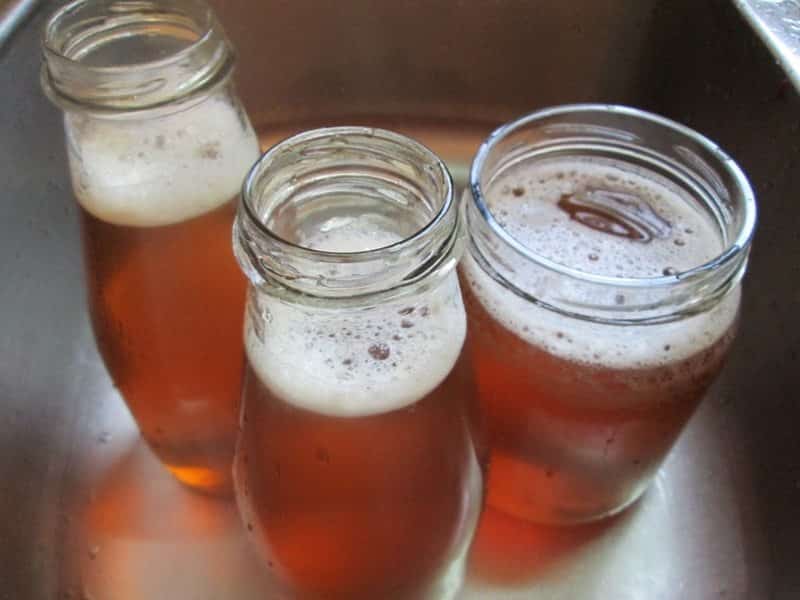How Surface Area of Container Affects Kombucha Brewing

Does The Surface Area of My Brewing Vessel Affect the Kombucha?
Yes! While one can use a wide variety of shapes and sizes of containers – providing that they are made out of a suitable material, preferably glass – the surface area of your vessel will affect your fermentation and SCOBY. This is because it determines the amount of air available to the kombucha and SCOBY.
If you want more info on brewing vessels you can read Guide to the Best Kombucha Brewing Containers.
The Effect of Container Surface Area on Kombucha Brewing
Kombucha and the SOBY need air for the fermentation process to take place. If little air is present, fermentation will be very slow. Narrow necked brewing containers allow less air to reach the SCOBY culture than vessels with large openings which give the brew a large surface area.
Some brewers recommend using containers with the largest surface area available, to ensure good fermentations. In certain cases this can be of benefit, but not always. The determining factor is whether the temperatures in which you are brewing are hot or cold, and whether you are experiencing slow or fast fermentations.
Cold Temperature and/or Slow Ferments
If you are brewing in cool to cold temperatures, increasing the surface area can be beneficial. Cool to cold temperatures result in slow ferments. If you are struggling with this, then giving the SCOBY and kombucha a vessel with a wider opening can help you to get slightly faster ferments. The increase in oxygen plays a role, but so does the fact the SCOBY will increase in size to cover the surface. This will result in more SCOBY to liquid ratio, meaning the SCOBY will process the tea quicker.
Keep in mind that slower fermentations are more desirable that fast ones, as a better quality kombucha is produced, containing higher levels of organic acids and vitamins.
Warm Temperatures and/or Fast Ferments
In the opposite scenario, where the temperatures are warm, and you are experiencing fast fermentation as it is, then using a brewing vessel with a large opening that gives the kombucha a big surface area, is not ideal.
Experts say that it takes more than 7 days for the majority of the health giving components of kombucha to develop, even if the brew has turned sour or vinegary before the 7 days.
What will happen if you increase the surface area, when you are already experiencing fast ferments, is that your brews will mature even quicker. This can lead to the situation where your brew is quite sour – more so than you would like – before the golden 7 days have passed.
This is frustrating, because you want to try to strike a nice balance between kombucha that is potent in its organic acid content, but delicious to drink as well. If your brews are going sour before 7 days have passed, then you just can’t win!
Last Word on Surface Area
You can use surface area to manipulate fermentation time. Manipulating the fermentation time allows you to have ferments which mature at the right speed to give you a brew which is packed full of organic acids, and at the same time doesn’t have to taste too vinegary. If you are struggling with cold weather and extremely slow fermentation, increasing surface area can help to give your brew a boost, get it active and back into normal fermentation times.
